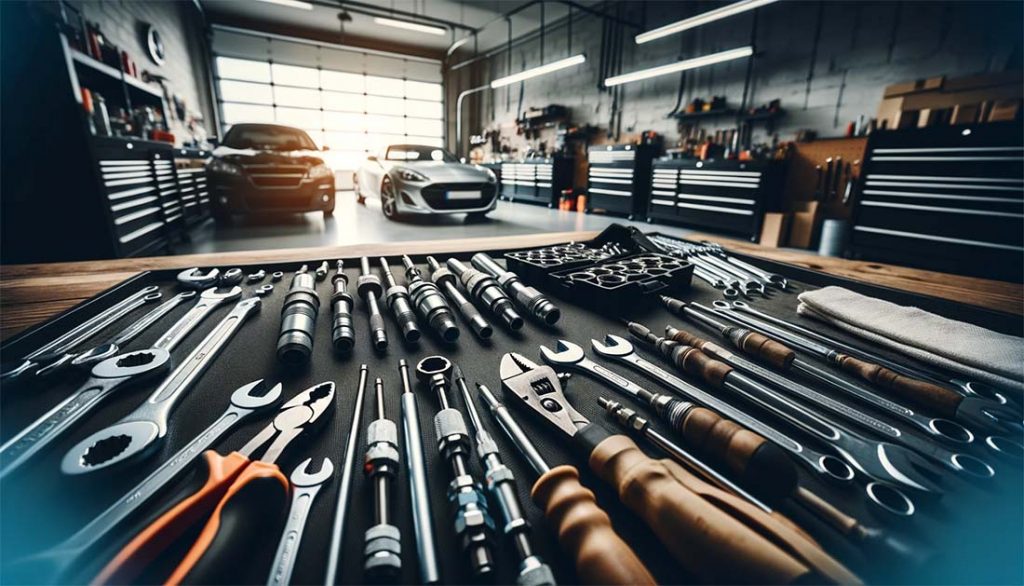Removing a broken spark plug from a cylinder head is a delicate process that requires precision and patience. Spark plugs are essential for the operation of gasoline engines, providing the spark that ignites the fuel-air mixture. However, they can sometimes break during removal or due to over-tightening, leaving part of the plug lodged in the cylinder head. This scenario can be frustrating and, if not handled correctly, may lead to costly repairs. Understanding the right techniques and tools for the job is crucial for successfully removing a broken spark plug without damaging the cylinder head.
Essential Tools for the Job
Before attempting to remove a broken spark plug, gathering the right tools is essential. These tools not only facilitate the removal process but also help prevent damage to the engine components. You will need:
- A spark plug extractor tool set
- A penetrating oil
- A torque wrench
- Needle-nose pliers or a magnetic retrieval tool
- A rubber mallet (optional)
Having these tools at hand before starting the removal process will prepare you for the task ahead and increase your chances of success.
Safety Measures and Precautions
Before embarking on the task of removing a broken spark plug from a cylinder head, it’s crucial to adopt appropriate safety measures and precautions. Working on an engine, especially when dealing with broken components, poses various risks, including physical injury and further damage to the engine. Always wear protective gear such as safety glasses and durable gloves to shield yourself from sharp edges and debris. Ensure the engine is cool before starting the procedure to avoid burns, and work in a well-ventilated area to prevent inhalation of harmful particles. Disconnecting the battery can also prevent any electrical accidents while working around the engine compartment. Taking these precautions seriously not only ensures your safety but also helps in maintaining a secure working environment.

Step-by-Step Guide to Removal
The process of removing a broken spark plug from a cylinder head involves several careful steps to ensure the plug is extracted without causing further damage:
-
Apply penetrating oil around the broken spark plug area and let it sit for several hours or overnight. This will help loosen any corrosion or debris that may be holding the plug in place.
-
Attach the spark plug extractor tool to the broken plug. Make sure it is securely fastened and aligned to avoid slippage during the removal process.
-
Gently apply pressure in the counter-clockwise direction to unscrew the broken plug. If the plug does not budge, a few light taps with a rubber mallet on the tool handle can help break the seal.
-
Once loosened, carefully remove the broken plug from the cylinder head. Use needle-nose pliers or a magnetic retrieval tool if necessary to remove any small pieces that may have broken off.
-
Inspect the cylinder head threads for any damage and clean out any debris from the spark plug well.
Preventing Future Spark Plug Breakage
Preventing spark plug breakage is key to avoiding the hassle of removal in the future. Here are some tips to help prevent spark plug issues:
- Always follow the manufacturer’s torque specifications when installing spark plugs to avoid over-tightening.
- Use anti-seize compound on the spark plug threads, which can help prevent sticking and corrosion.
- Regularly inspect and replace spark plugs as part of routine maintenance to prevent them from becoming seized in the cylinder head.
Conclusion
Successfully removing a broken spark plug from a cylinder head requires patience, the right tools, and a careful approach. By following the step-by-step guide provided, you can tackle this task with confidence, minimizing the risk of damaging your engine further. Remember, safety should always be your top priority; taking necessary precautions protects you and ensures a smooth removal process. Regular maintenance and proper spark plug installation are key to preventing future issues. Should you encounter a broken spark plug, this guide equips you with the knowledge to address the problem effectively. Maintaining an engine well includes being prepared for unexpected repairs, and mastering tasks like these enhances your automotive repair skills, contributing to the longevity and reliability of your vehicle.

